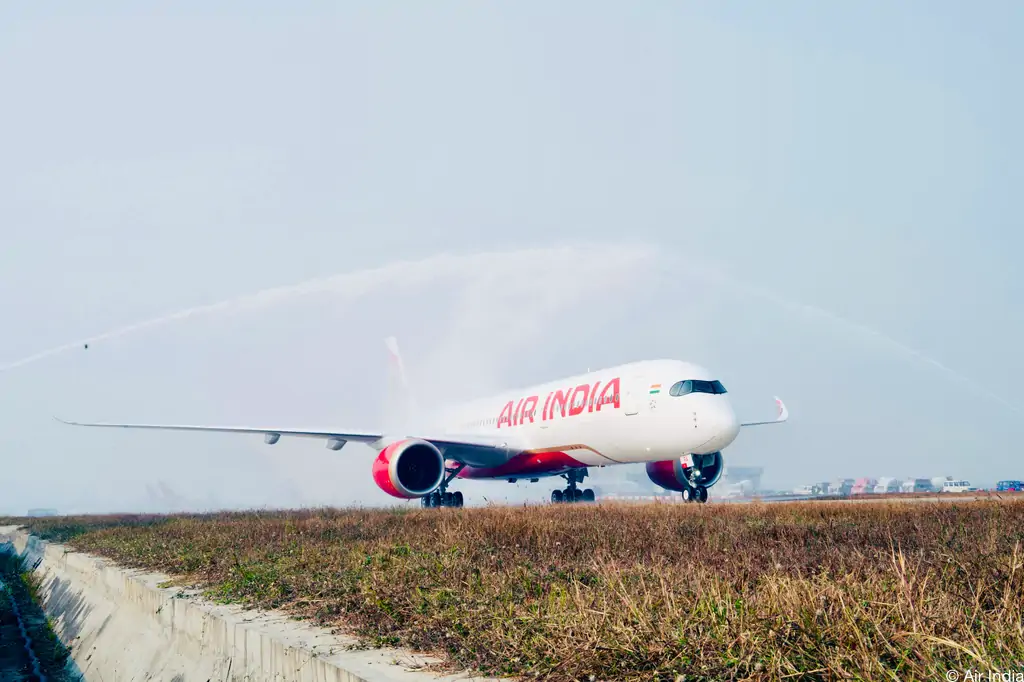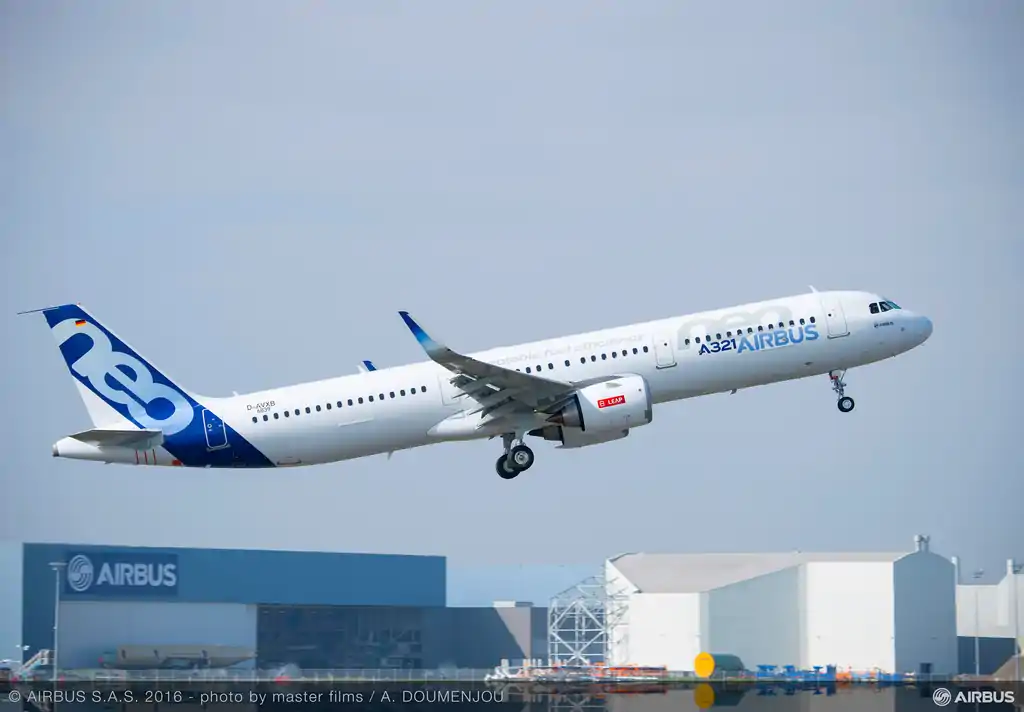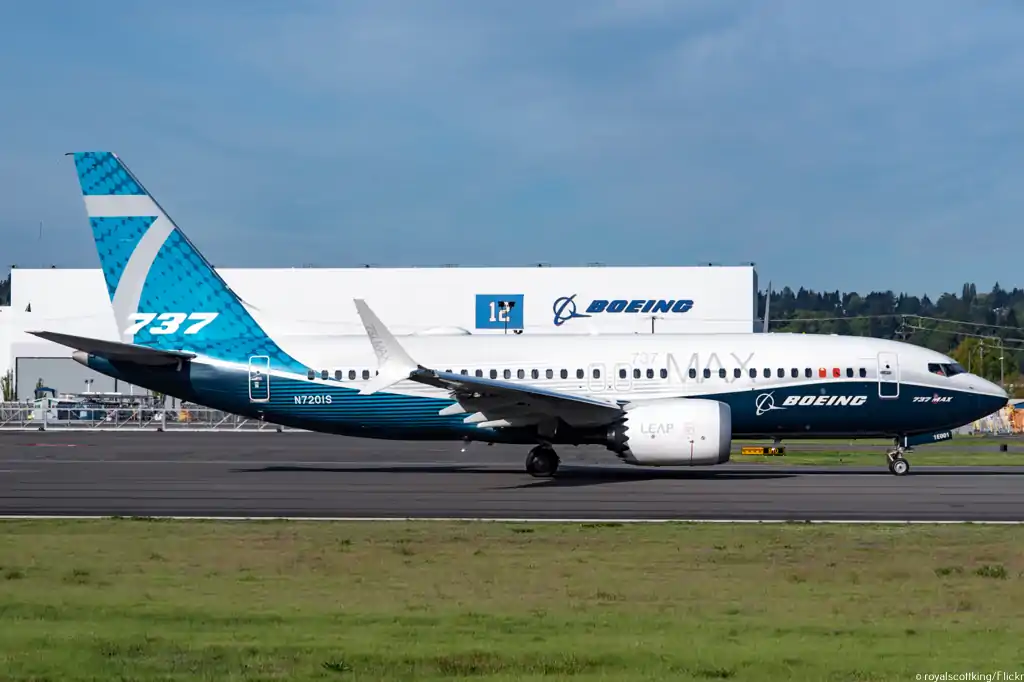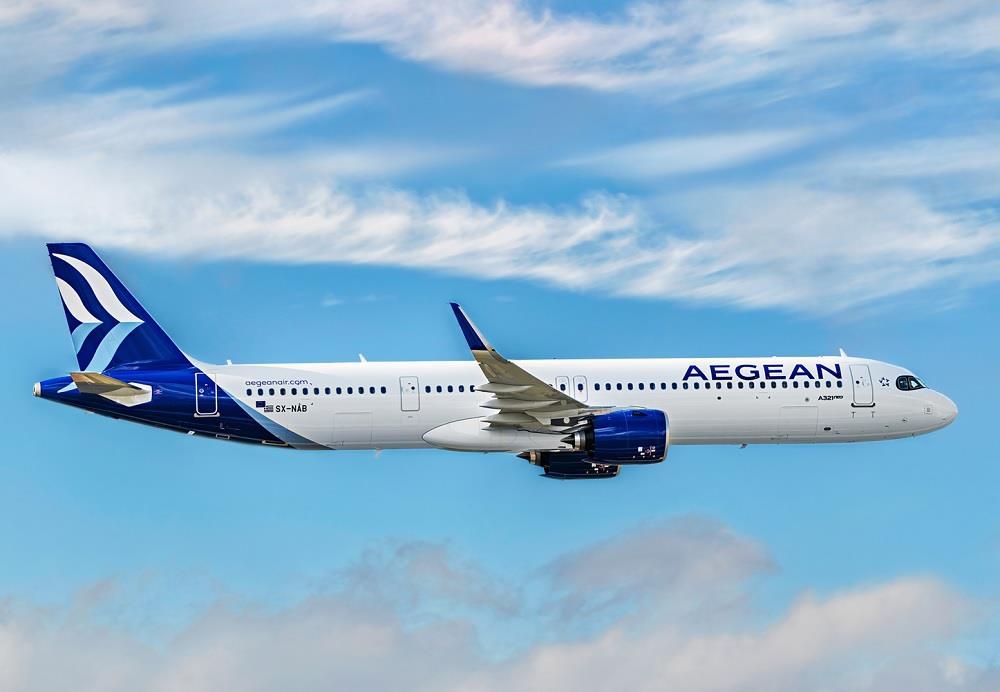Executives of 10 Prominent Foreign Airlines Questioned by DGGI Over Alleged Tax Evasion
Radhika Bansal
01 Jan 2024

Executives of at least ten prominent foreign airlines including British Airways, Etihad, Thai Airways and Qatar Airways been questioned by the Directorate General of GST Intelligence (DGGI) over allegations of tax evasion which have run into hundreds of crores of rupees, TOI reported on Sunday, December 31. The DGGI has questioned these executives over allegations of these carriers’ booking expenditure related to their India operations with their overseas head offices in the last month.
Citing sources, TOI reported that the DGGI has requested documentation from these airlines covering every expense incurred by the international carriers for their operations in India. This may include aircraft leasing, crew and ground staff costs, fuel for the aircraft, and any additional maintenance or repair expenses.
For the first time, Indian authorities have requested that international airlines report all of their expenses relating to India and pay taxes for services provided here under the new GST regime. For international shipping lines and carriers doing business in India, this expense might reach millions of dollars.
Finance Issues With Foreign Airlines
Six airlines' finance managers have recorded their statements with DGGI, including British Airways, Etihad, Thai Airways, and Qatar Airways. These executives are in charge of matters relating to accounting and tax compliance for their activities in India.
Executives from Singapore Airlines, Lufthansa, Emirates, Oman Airlines and several others have reportedly not yet responded despite having outstanding summons. Meanwhile, several airlines, like Emirates, have been given another date to come in for interrogation, but several others have asked for an extension since they are still compiling the necessary documentation from their head office.
Despite a summons being issued to Singapore Airlines that has been lingering for a few months, officials from the airline have not yet shown up for interrogation, sources told TOI. It has been requested to provide documentation of all expenses incurred for its operations in India.
At least six international airlines had their India offices searched by DGGI in October to determine their tax obligations. As a result, these carriers requested new deadlines from their foreign head offices to submit the necessary data.
According to sources, DGGI has asked these airlines to produce documents related to all expenditures booked by the foreign carriers about their expenditure on India operations, which may include leasing of aircraft, expenditure of crew members, ground staff, airline fuel and any other spending on maintenance or repair.
GST Regime in India
This is for the first time that Indian authorities have asked foreign airlines to account for their India-related expenditure and pay tax for services rendered here under the new GST regime. This expenditure runs into millions of dollars for foreign carriers and shipping liners engaged in business activities in India. The new GST regime treats Indian subsidiaries of any foreign company as two separate entities, and the former needs to comply with the tax rules applicable to any other company in India.
As per Goods and Services Tax (GST) terms and clauses, the establishment of a company in India and its counterpart outside the country are treated as distinct legal entities. This means that transactions between a foreign airline's head office and its Indian branch office must adhere to GST regulations.
According to Schedule 1 of the Central Goods and Services Tax (CGST) Act, even if there is a supply without consideration within a company's head office and branch office, it is deemed as a supply for tax purposes.
A statement issued by the finance ministry on October 18 stated that DGGI has detected GST evasion of INR 57,000 crore from April 2020 to September 2023 involving over 6,000 fake instances of input tax credit claims leading to the arrest of 500 people.
(With Inputs from The Times of India)
Read next
Pilot unions at Air India on Sunday, December 31 expressed "concern" over the Tata Group-owned airline's alleged threat to the cockpit staff with "appropriate measures" if pilots report sick for duty.
In a communication to Air India senior vice president for flight operations Manish Uppal on Sunday, December 31, the Indian Pilots Guild (IPG) and Indian Commercial Pilots Association (ICPA) said that reporting illnesses without the "fear of reprisal" is in the interest of flight safety. IPG is the wide-body aircraft pilots' body at Air India while ICPA represents pilots who fly the full-service carrier’s narrow-body Airbus 320 family aircraft.
The copies of the letter have also been marked to Air India Chairman N Chandrasekaran, DGCA Vikram Dev Dutt, Air India Managing Director and CEO Campbell Wilson, among others.
"We are writing to express our concern and objection regarding recent communications implying threats of appropriate measures for sick reporting," the pilot bodies said in the communication. The two unions stated that the IPG-ICPA understand the importance of maintaining a productive and efficient work environment.
They said, "It is crucial to acknowledge the significance of pilot's health and its cascading effect on flight safety." There may be instances where pilots feel "intimidated" or "compelled" to operate flights despite their health concerns, potentially jeopardising the safety of the flight, the letter warned. "Threatening employees for reporting sickness not only violates ethical principles but also goes against the Aircraft Rules Act, 1937," they said in the communication.
The DGCA places a high priority on safety, the physical and mental health of pilots of utmost importance, the letter stated, adding, “pilots should feel comfortable reporting illnesses without the fear of reprisal in the interest of flight safety.”
Unions Not Happy with the Management
Air India pilot unions IPG and ICPA on Saturday, December 2 expressed "deep concern" over the flight duty and rest period scheme adopted by the Tata Group airline, accusing the carrier of deviating from the DGCA-approved norms.
The two unions -- Indian Pilots' Guild (IPG) and Indian Commercial Pilots' Association (ICPA) -- in a joint communication to the Directorate General of Civil Aviation also alleged that the introduction of a side policy, along with the flight duty
The pilot unions have also sought a review and assessment of the issue by the DGCA, requesting it to take appropriate measures to address the matter. Pilots and cabin crew's flight duty time limitations are governed by the aviation safety regulator DGCA, which proposed more rest hours for the pilots last month.
In recent months, the issue of fatigue has been in focus, especially after the death of an IndiGo pilot, who had collapsed at the boarding gate of Nagpur airport in September. And last month, an Air India pilot during a training session showed signs of discomfort and later died at the Delhi airport.
However, Air India said the pilot was not on active flying duty and was undergoing conversion training to operate wide-body aircraft.
The pilot unions are urging the DGCA to conduct a thorough review and assessment of Air India's new policy, emphasizing the importance of ensuring that airline practices are in line with DGCA regulations. The letter highlights the need for compliance with safety norms to protect both crew members and passengers, stressing that any deviation from approved regulations could jeopardize overall safety and well-being in the aviation sector. The situation reflects a broader concern about the balance between operational efficiency and safety in the rapidly evolving Indian aviation industry.
Read next
As we sit comfortably in our commercial airplanes, cruising at 35,000 feet and marveling at the wonders of modern aviation, a question may cross our minds: Can these airplanes venture into space, even by mistake? In this article, we explore the scientific and engineering limitations that prevent commercial airplanes from reaching the vast expanse beyond Earth's atmosphere.
Aerodynamic Lift: Beyond the Karman Line
A fundamental aspect of flight is aerodynamic lift, generated by an aircraft's wings exploiting pressure differences with air molecules. However, in space, characterized by a lack of air molecules, wings are rendered ineffective, and no lift is created. This limitation sets a clear boundary known as the Karman Line, approximately 62 miles (100 km) above sea level, beyond which space begins.
As commercial airplanes ascend, the air density decreases, affecting lift generation. Most airplanes have a service ceiling between 38,000 and 41,000 feet, and attempting to climb beyond this results in a lack of sufficient air density to support lift.
Combustion and Thrust in the Void
The combustion engines of commercial airplanes, reliant on oxygen in the atmosphere, face significant challenges as altitude increases. Above 45,000 feet, where air density diminishes, the engines struggle to draw in enough air for combustion, limiting thrust. Unlike rockets, which carry their own liquid oxygen, airplane engines rely on atmospheric oxygen, making them inefficient in the low-density conditions of space.
As engines climb, they reach RPM limits, and the lack of air density hinders their ability to produce the required thrust, ultimately restricting the altitude commercial airplanes can reach.
Cabin Pressurization: Breathing in the Stratosphere
Above 12,500 feet, air density becomes insufficient for the human body to survive without artificial pressurization. Commercial airplanes employ High-Efficiency Particulate Air (HEPA) filters and compressed air from the engines to pressurize the cabin. However, as airplanes approach the boundary of space, engines can no longer supply enough air to maintain cabin pressure. Without pressurization, passengers would face the risk of hypoxia, a deficiency of oxygen that can lead to organ impairment and death.
Control Surfaces in the Void: Maneuvering Challenges
The control surfaces of commercial airplanes, such as ailerons and rudders, rely on air density to function effectively. In the low-density environment near the Karman Line, these surfaces lose their efficiency. Flight tests near this boundary have shown that traditional control surfaces become nearly useless. To achieve maneuverability in space, a Reaction-Control System, commonly used in spacecraft, becomes essential.
Escape Velocity, Re-entry, and the Melting Point
The escape velocity required to break through Earth's atmosphere is far beyond the capabilities of commercial airplanes. Even if a plane could achieve such speeds, the subsequent re-entry would subject it to temperatures exceeding the melting point of its aluminum airframe. The space shuttle faced temperatures of up to 1650°C during re-entry, while aluminum melts at 660°C.
To survive re-entry, an airplane would need a heat-resistant system, such as silica tiles, but this would increase the aircraft's weight, reducing its payload and making space travel economically unfeasible for commercial purposes.
Conclusion
While commercial airplanes have revolutionized global travel, their design and capabilities are inherently grounded in Earth's atmosphere. The transition into space requires technologies and engineering beyond the scope of conventional aviation. As we gaze out of airplane windows at cruising altitudes, we can appreciate the remarkable achievements of aviation while recognizing the boundaries that separate us from the cosmos.
With Inputs from Pilot Teacher
Read next
Aircraft lessor BOC Aviation has announced a significant expansion of its fleet with the acquisition of four Airbus A321NEO and two Airbus A320NEO aircraft from Airbus S.A.S. The deal, finalized on December 27, marks a strategic move for BOC Aviation, positioning the company for future growth in the dynamic aviation industry.
A Strategic Partnership: BOC Aviation and Airbus
BOC Aviation's decision to purchase the state-of-the-art Airbus A321NEO and A320NEO aircraft underscores the lessor's commitment to maintaining a modern and fuel-efficient fleet. The Airbus A321NEO (New Engine Option) and A320NEO are part of the highly successful A320 family, known for their advanced technology and fuel efficiency.
Details of the Agreement
The agreement between BOC Aviation and Airbus involves the acquisition of four A321NEO and two A320NEO aircraft. The delivery schedule for these aircraft is set for 2027 and 2028, allowing BOC Aviation to plan for the integration of these cutting-edge planes into its existing portfolio.
Despite the significance of the deal, the exact financial details remain undisclosed. BOC Aviation has not revealed the deal value, keeping specific financial terms confidential. This approach is common in the aviation industry, where companies often choose not to disclose the precise financial aspects of their agreements.
Advantages of the Airbus A321NEO and A320NEO
The Airbus A321NEO and A320NEO are celebrated for their advanced design, incorporating the latest technological innovations to enhance fuel efficiency, reduce emissions, and provide an improved passenger experience. These narrow-body aircraft are popular choices among airlines and lessors aiming to optimize operational costs and environmental impact.
The A321NEO, with its extended range and increased seating capacity, is well-suited for both short-haul and medium-haul routes. Meanwhile, the A320NEO offers flexibility and efficiency, making it a versatile choice for various airline operations.
Strategic Timing for Delivery & Looking Ahead
By scheduling the delivery of the newly acquired aircraft for 2027 and 2028, BOC Aviation strategically aligns with the anticipated growth and recovery of the aviation industry. The carefully planned timeline allows the lessor to adapt to market conditions and meet the evolving demands of its lessees.
This aircraft acquisition represents a pivotal moment for BOC Aviation as it positions itself for sustained growth in the competitive aircraft leasing market. The strategic decision to invest in the latest Airbus models demonstrates the lessor's dedication to providing cutting-edge and eco-friendly solutions to its global customer base.
Conclusion
BOC Aviation's agreement with Airbus for the acquisition of four A321NEO and two A320NEO aircraft marks a significant milestone for the lessor. As the aviation industry continues to evolve, BOC Aviation's strategic investment in modern and efficient aircraft positions the company for success in the years to come. With a commitment to technological innovation and customer satisfaction, BOC Aviation is set to play a key role in shaping the future of air travel.
With Inputs from Reuters
Read next
After nearly a year of careful modifications and regulatory approvals, all Boeing 737 MAX jets operated by Chinese carriers have returned to service as of December 29, 2023. This significant development marks the end of a turbulent period for the best-selling Boeing model, grounded globally in 2019 following fatal crashes in Indonesia and Ethiopia. The MAX's return to service around the world began in late 2020, but Chinese airlines only resumed operations in January 2023.
Boeing China CEO Announces Full Resumption
Boeing China CEO Liu Qing made the announcement on December 29, 2023, through Chinese social media platforms, stating that "All China civil aviation 737 MAXs have resumed operations." This milestone involves the return to service of nearly 100 Boeing 737 MAX planes in the Chinese market. The resumption is the result of extensive modifications to the aircraft and enhanced pilot training programs implemented globally to address safety concerns.
Preparatory Activities and Flight Tests
Simultaneously, Boeing is engaged in preparatory activities and flight tests on a number of 737 MAX jets specifically designated for Chinese customers. This has fueled speculation that the U.S. aerospace giant could soon restart deliveries of the MAX to China, a significant development given the strained relations between Boeing and China in recent years.
Potential Breakthrough in Boeing-China Relations
If Boeing resumes deliveries of the 737 MAX to China, it would represent a major breakthrough in the strained relationship between the two entities. The MAX crisis, coupled with broader U.S.-China political tensions, had led to a freeze on new orders from China and suspended deliveries since 2019. A successful restart of deliveries could not only mend ties but also serve as a financial boon for Boeing, enabling the collection of payments for dozens of MAX planes in its inventory.
Recent Deliveries Signal Positive Momentum
In a positive sign for Boeing, the company recently made its first direct delivery of a 787 Dreamliner to China since 2019. This milestone was interpreted by industry experts as a potential prelude to the end of Beijing's freeze on 737 MAX deliveries. Additionally, through November, Boeing delivered eight 777 freighters to Chinese customers, according to company data, demonstrating a broader resumption of delivery activities.
Financial Implications and Market Dynamics
The resumption of MAX deliveries to China holds financial significance for Boeing, allowing the company to fulfill orders and receive payments for a substantial number of aircraft. This development comes at a time when Boeing has faced challenges in securing new orders from China since 2017, amid escalating trade tensions between the United States and China.
Conclusion
The full resumption of Boeing 737 MAX operations in China signals a positive turn for the aerospace giant and has the potential to mark a significant thaw in its relationship with China. As Boeing continues preparatory activities for deliveries and flight tests, industry observers will be closely monitoring developments to assess the long-term impact on the aerospace industry and U.S.-China trade relations.
With Inputs from Reuters
Read next
Aegean Airlines will wet-lease two A320-200s from Cyprus Airways under a long-term ACMI deal covering all of 2024. The first aircraft began operating for the Greek airline on December 19, 2023.
5B-DDQ (msn 4055) was ferried from Larnaca to Thessaloniki on December 18 and operated its first flight for Aegean Airlines to Prague Václav Havel the next day, Flightradar24 ADS-B data shows. The second aircraft, 5B-DDR (MSN 3933), will begin operating for the Greek airline in March 2024.
Besides the two A320-200s, Cyprus Airways also operates two A220-300s. The airline is planning to add more A220, considering the type as the foundation of its future fleet. The airline operates in a highly seasonal market that has been heavily affected by the drop in demand from/to Israel due to the war in Gaza, as Israel is a key international market for Cyprus.
Under the terms of the wet lease agreement, Cyprus Airways will also provide pilots and cabin crews to operate the leased aircraft, the first of which is due to be delivered to Aegean in December 2023. The second aircraft will follow in March 2024, before the busy summer season gets underway for the Athens-based carrier. The agreement was facilitated by aviation and ACMI specialists, Zela Aviation.
Aegean has also recently been struggling to offset a capacity shortfall caused by the need to ground several of its Airbus A320neo aircraft over the next few months as a result of unscheduled checks that are required on Pratt & Whitney PW1100G engines. This is an ongoing issue that has affected a large number of airlines worldwide in recent months.
"We are very happy and proud to take the next step in our strategic cooperation with Aegean. We already have an extensive codeshare agreement in place where we work closely to offer and optimise our joint products and services," Cyprus Airways' Chief Executive Paul Sies said.
Sies highlighted that Cyprus Airways routes to Dubai International Airport (DXB), Paris Charles De Gaulle International Airport (CDG), and Milan Malpensa Airport (MXP) performed better, helping the airline compensate for the loss of traffic to/from Israel.
In turn, Aegean Airlines operates twenty-eight A320-200s, sixteen A320-200Ns, five A321-200s, twelve A321-200NX, nine ATR72-600s, and a single DHC-8-100. The turboprops are placed on the AOC of Olympic Air. Besides its jet fleet, the carrier also operates a turboprop fleet of nine ATR72-600s. The turboprops are operated under the Air Operator Certificate (AOC) of Olympic Air. This wet-lease agreement signifies a significant development in Aegean Airlines’ operational capabilities, offering expanded service and efficiency.
Cyprus Airways is the latest incarnation of an airline using that name and has been operating as such since July 2016. The carrier operates an all-Airbus fleet comprising of two A220-300s delivered in 2023, plus two A320-200s registered 5B-DDQ and 5B-DDR. Cyprus Airways serves a highly seasonal market, which has recently faced challenges due to decreased demand from and to Israel, a crucial international market for Cyprus, primarily affected by the conflict in Gaza.







Comment